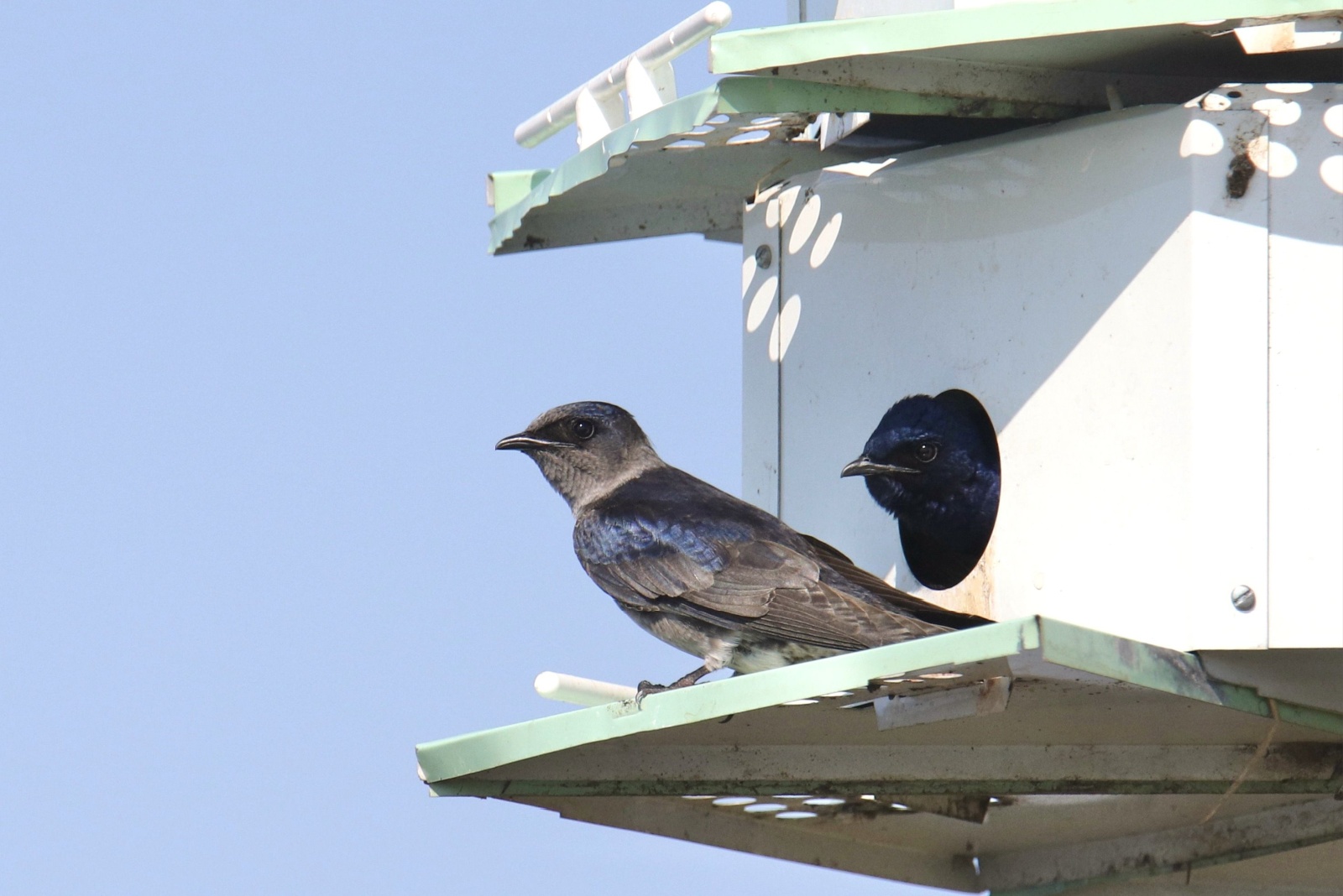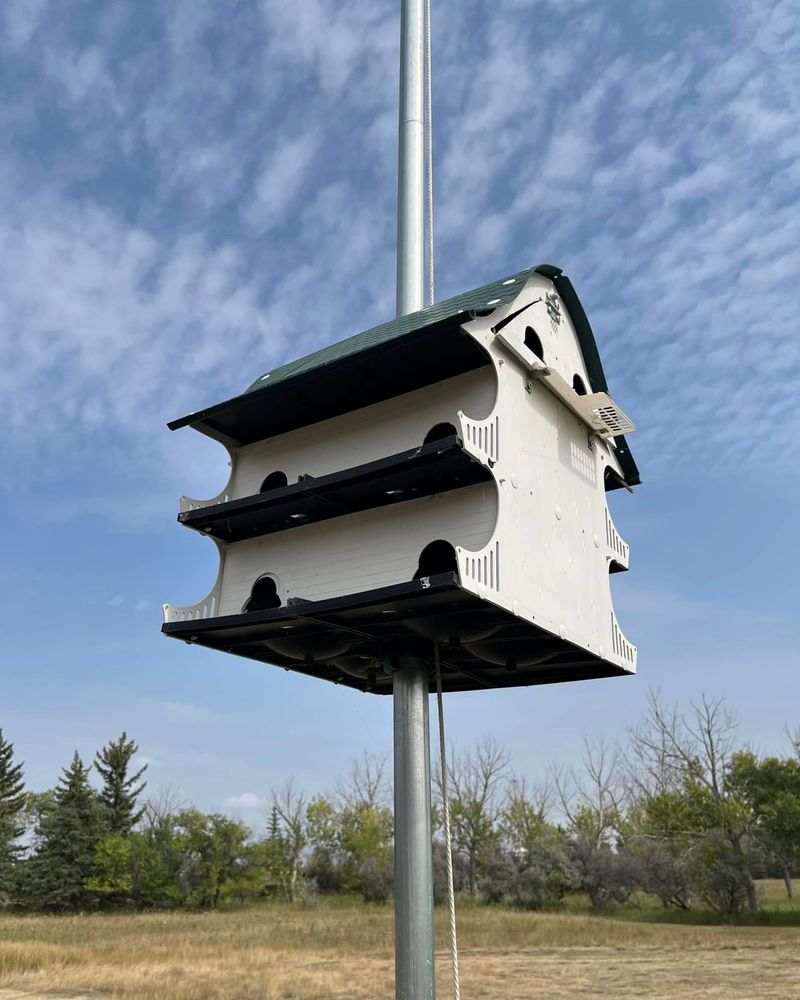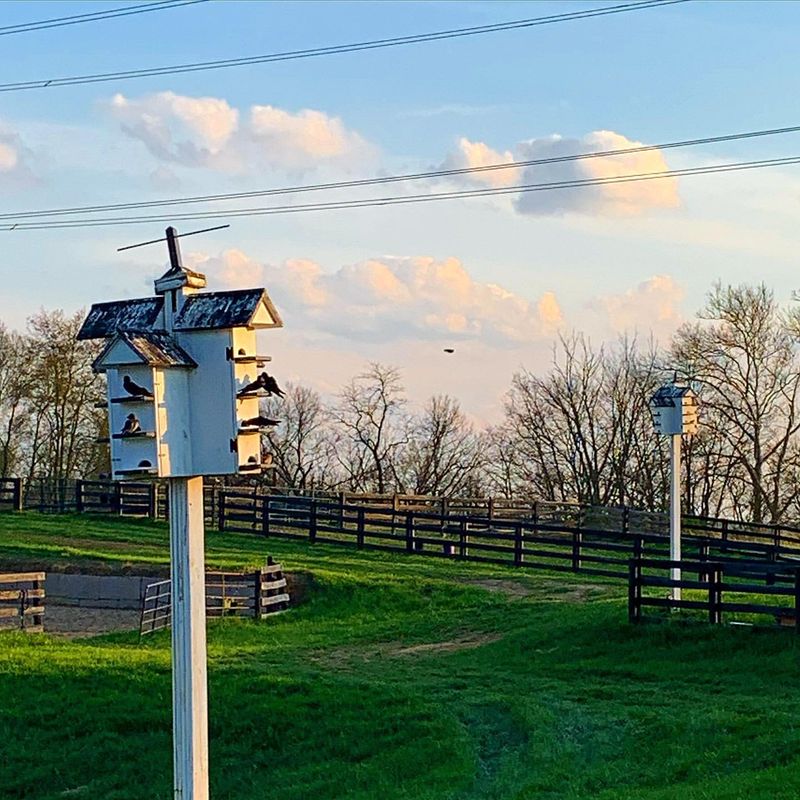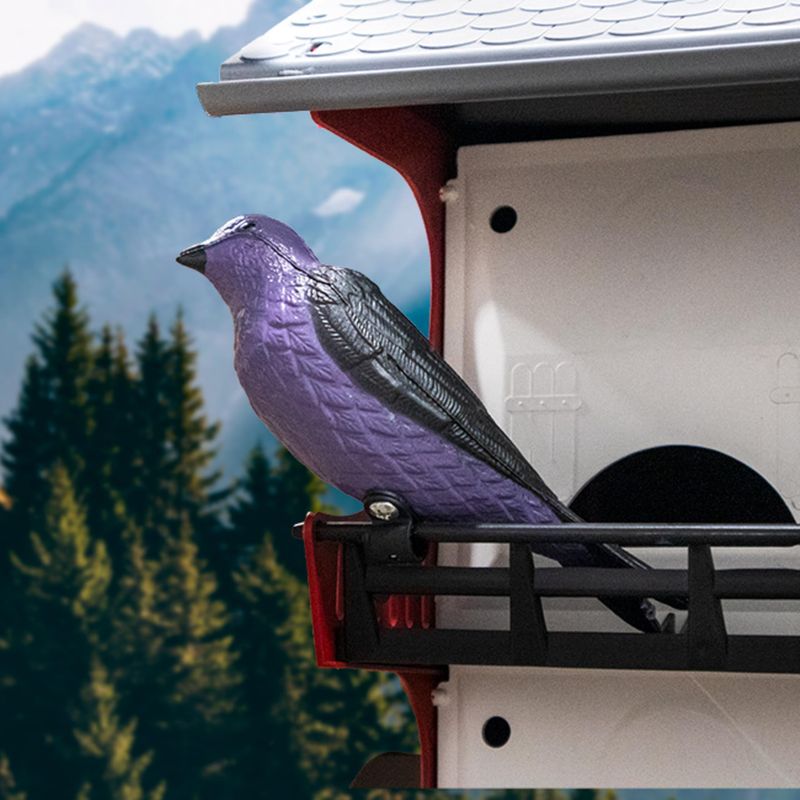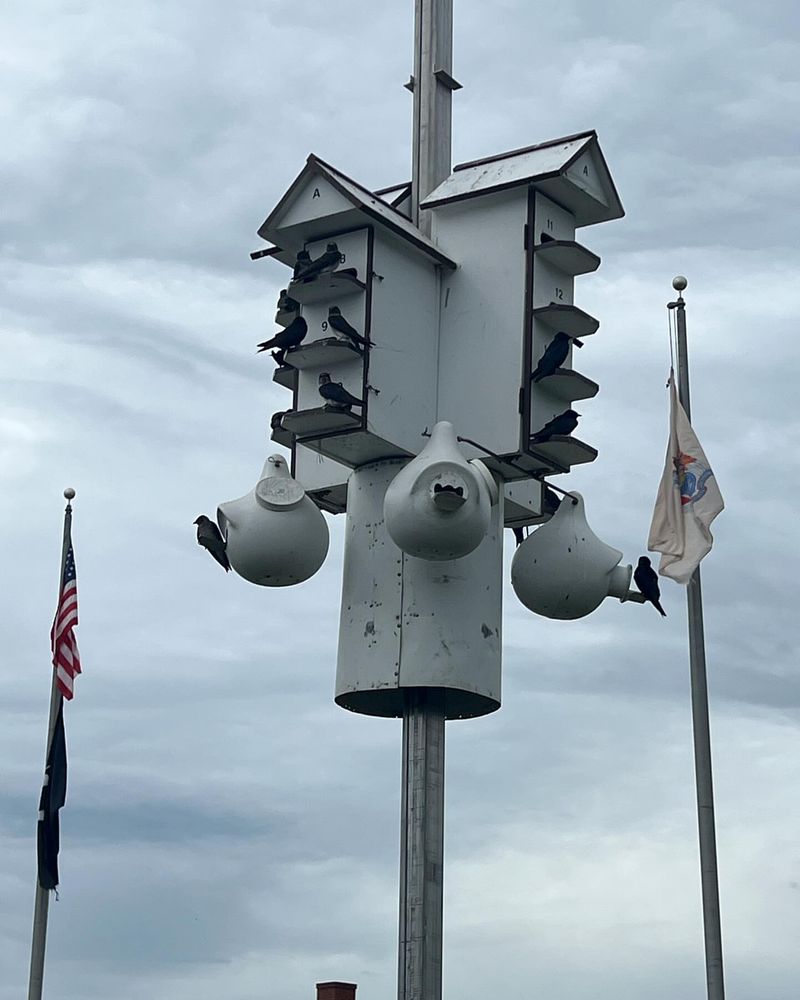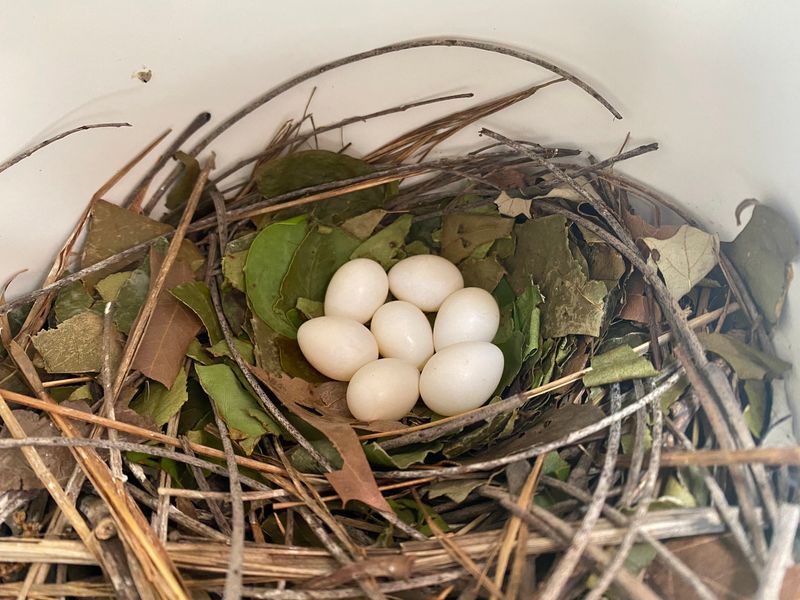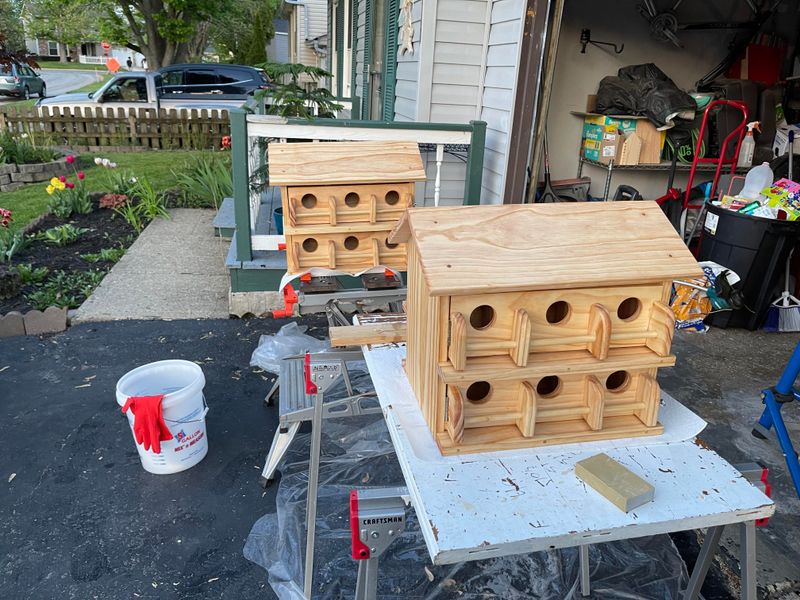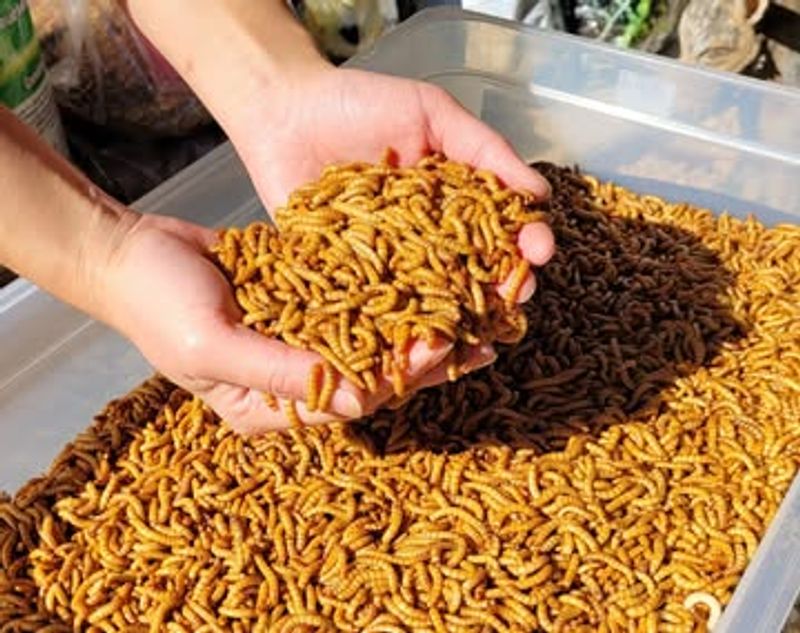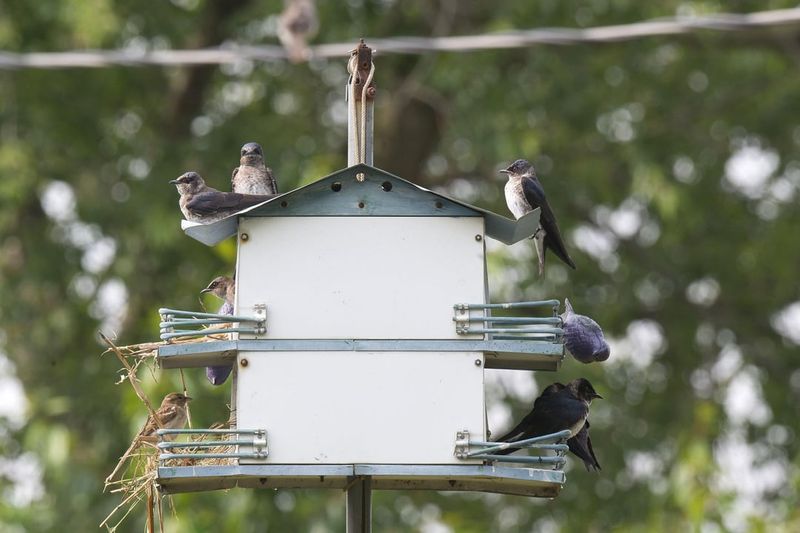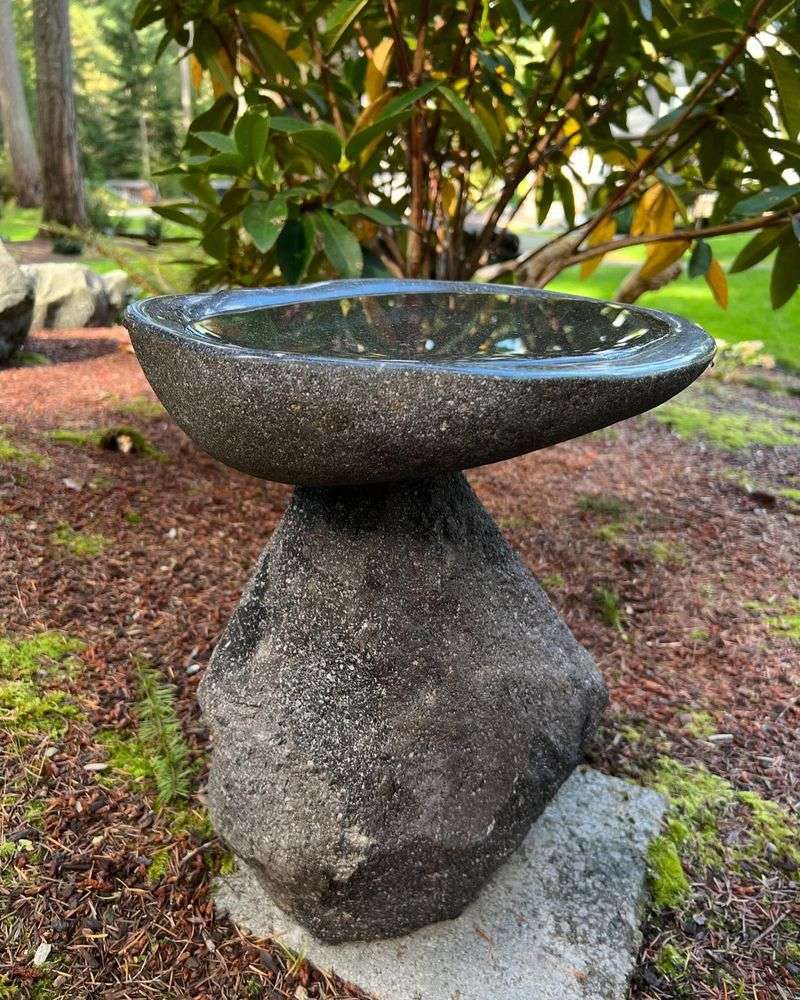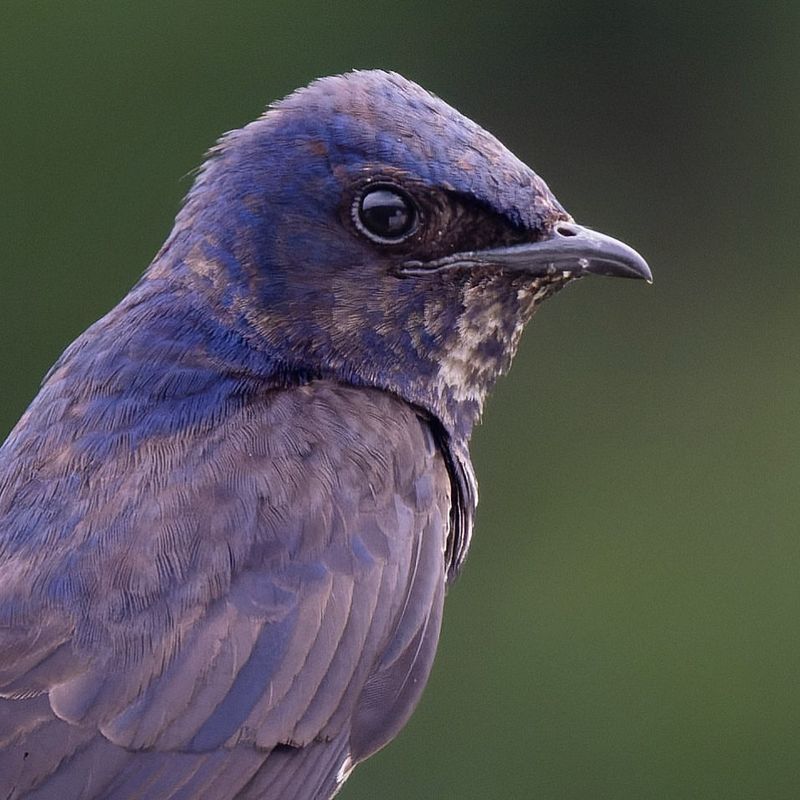Purple Martins are beautiful birds that bring joy to Ohio backyards with their deep purple feathers and cheerful songs. These aerial acrobats not only provide entertainment but also help control pesky insects like mosquitoes and flies.
Attracting them takes some special preparation, but the reward of hosting a thriving colony makes every effort worthwhile.
1. Install Proper Housing
Purple Martins in Ohio almost exclusively nest in human-provided housing. They prefer multi-compartment houses or special gourds mounted 12-20 feet high in open areas.
The entrance holes should be precisely 2⅛ inches in diameter to keep out larger birds. White houses reflect heat, keeping nestlings comfortable during hot summer days.
Remember to include proper ventilation and drainage holes in each compartment to prevent moisture buildup that can harm eggs and nestlings.
2. Create Open Flight Paths
Martin houses need plenty of open space around them. These birds swoop and glide, requiring at least 40 feet of clear flying space in all directions.
Place houses away from tall trees, buildings, and power lines that could obstruct flight paths or provide perches for predators. The ideal location is in the center of your yard with nothing taller than the house within 40-60 feet.
Martins feel safer with room to maneuver, making them more likely to choose your yard for nesting.
3. Use Decoys To Signal Safety
Purple Martins are social creatures drawn to places where other martins already live. Plastic decoys mounted on your housing can trick passing birds into thinking your site is established and safe.
Position a few fake martins near entrance holes or on perches. The dark silhouettes against the white housing catch the eye of birds scouting for colonies.
For extra appeal, play recordings of Purple Martin dawn songs during early spring mornings when migrants are searching for homes.
4. Implement Predator Guards
Raccoons, snakes, and hawks pose serious threats to martin colonies. A metal pole with a properly installed baffle prevents climbing predators from reaching nests.
Entrance holes with special crescent-shaped openings or porch dividers discourage European Starlings and House Sparrows from taking over compartments. Some Ohio martin landlords add owl guards – wire cages that prevent larger birds from accessing nest entrances.
Effective predator control dramatically increases your chances of attracting and keeping martins.
5. Provide Nearby Mud Sources
Martins use mud to build nest foundations and reinforce their nesting materials. During dry Ohio springs, creating a mud puddle can be a powerful attraction.
Maintain a small area of bare soil in your yard and keep it damp with a slow-running hose or sprinkler. Add some straw or grass clippings nearby for nesting material.
The ideal mud source should be within 100 yards of your martin housing but far enough away that predators can’t use it as an ambush spot.
6. Time Your Housing Setup Correctly
Timing is crucial when attracting Purple Martins in Ohio. Scout males typically arrive in late March to early April, with females following about two weeks later.
Have your houses cleaned, repaired, and mounted by mid-March. Raising housing too early invites unwanted birds like starlings and sparrows to claim the compartments before martins arrive.
Some experienced Ohio martin landlords use a pulley system to keep houses lowered until the first martins are spotted in the area.
7. Supplement Natural Food Sources
While Purple Martins primarily eat flying insects, they occasionally struggle to find food during cold, rainy Ohio spring weather. Offering supplemental food can save lives during these harsh periods.
Scrambled eggs, mealworms, or crickets placed on a platform feeder near the housing provides emergency nutrition. Some landlords use special martin feeders that attach directly to houses.
During prolonged cold snaps, this supplemental feeding can be the difference between colony survival and abandonment.
8. Maintain Proper Housing Management
Successful martin colonies require regular maintenance. Use a pole system that allows houses to be lowered for weekly nest checks and cleaning.
Remove nests of competing birds like House Sparrows immediately. Track which compartments martins use and leave successful nests in place for returning birds the following year.
Many Ohio martin landlords keep detailed records of arrival dates, egg-laying patterns, and fledging success, which helps them improve their management techniques year after year.
9. Create A Water Feature Nearby
Purple Martins appreciate nearby water sources for drinking and bathing. A simple birdbath, small pond, or decorative fountain provides essential hydration, especially during hot Ohio summers.
Martins particularly enjoy flying through gentle sprinkler mist. Position water features in open areas where birds can approach without fear of lurking predators.
The sound of moving water also serves as an audio attraction that can draw passing martins to investigate your yard as a potential nesting site.
10. Join Local Martin Conservation Groups
Ohio has active Purple Martin conservation organizations where experienced “martin landlords” share advice. Groups like the Ohio Purple Martin Society hold meetings and colony tours that provide invaluable insights.
These communities often coordinate “mentor programs” where established colony managers help newcomers attract their first birds. Some even share extra housing or donate starter pairs to promising new sites.
The collective knowledge of these groups dramatically increases your chances of attracting martins to your Ohio backyard.

